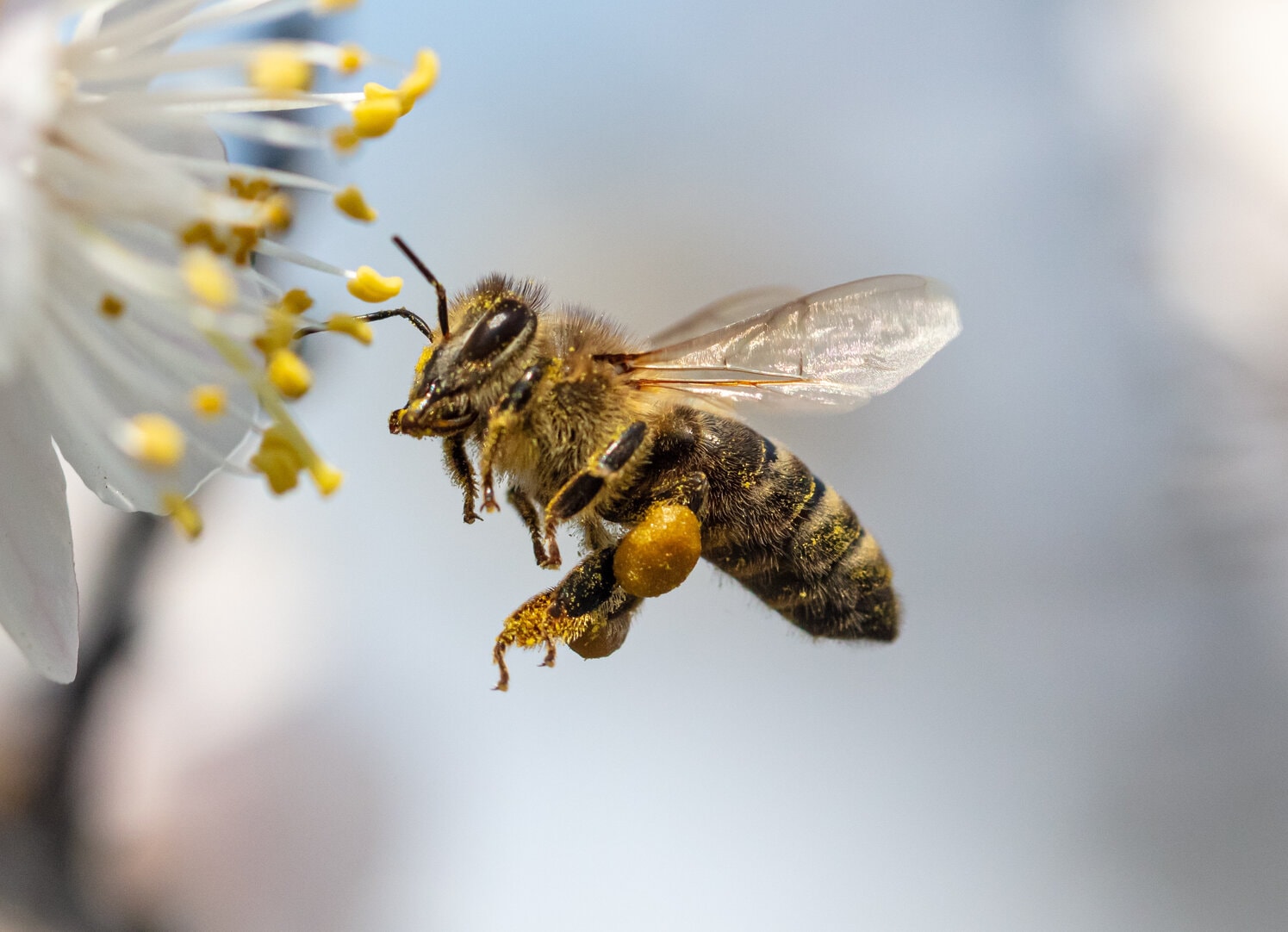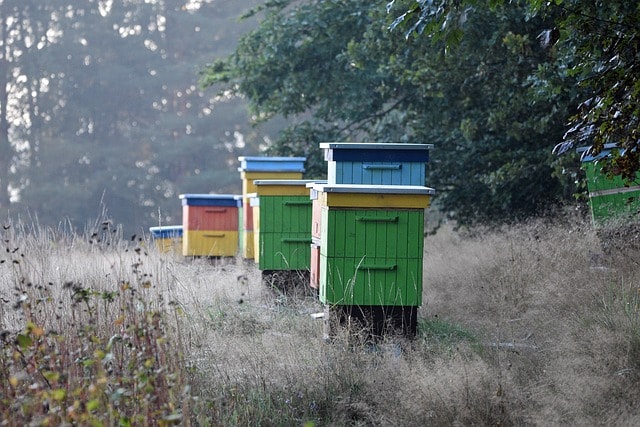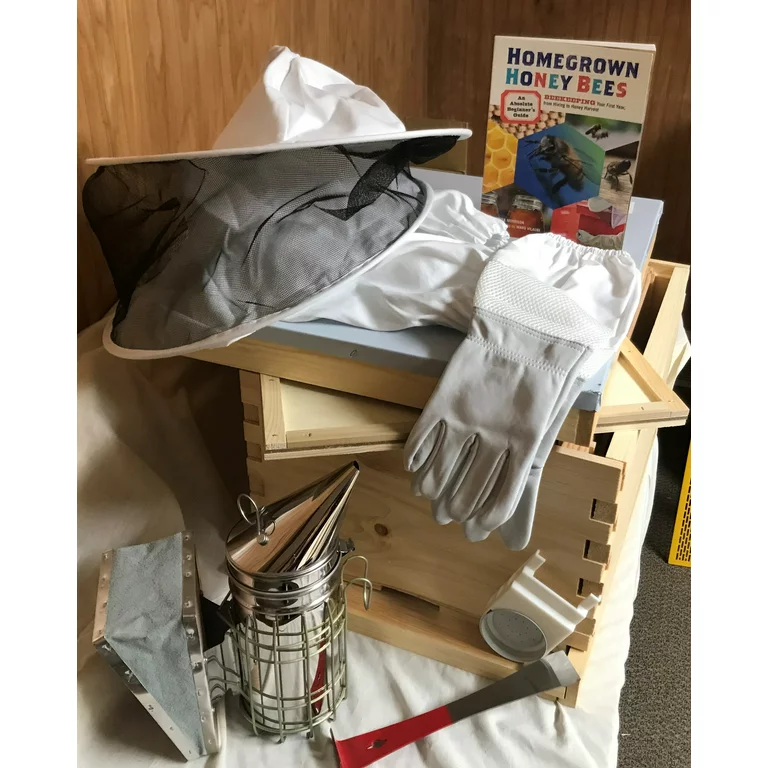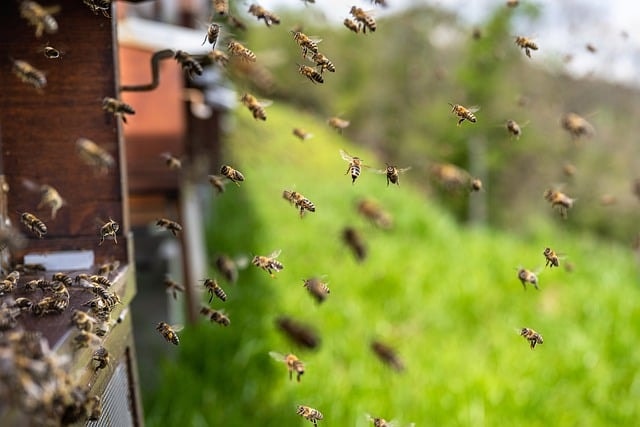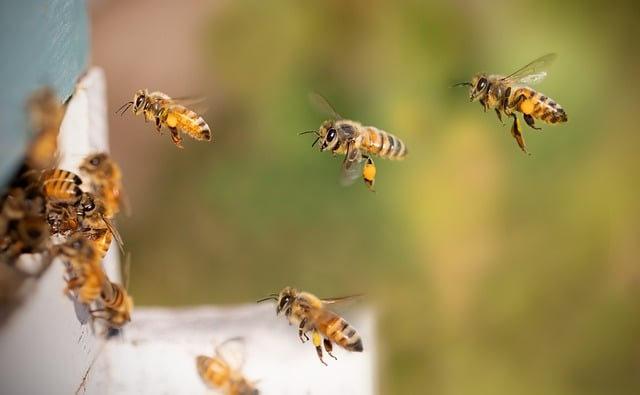Disclosure: This post may contain Amazon affiliate links.
Every time when we start with something new we face a lot of difficulties, hard times, headaches, and sometimes tears. That’s why I’m going to share with you how to prepare and where to start your beekeeping journey.
STEP 1: LOVE THE BEES. LEARN ABOUT HONEYBEES AND THE HIVE
Before you start, it's important to know about honeybees and their hives. Learn about their biology and their world. As a future beekeeper, it’s very important to understand bees. Honeybees live in colonies with a queen, worker bees, and drones. The queen lays eggs, worker bees do most of the work, and drones mate with queens from other hives. Every beehive is a different colony with its own “character”. Learning about this wonderful creature you are going to understand and love them more and more. Love for bees is crucial for sustainable beekeeping.
You can learn about the bees by taking an online course, joining local bee club meetings, or watching YouTube videos. Reading blogs and listening to podcasts about beekeeping are also great ways to learn. Keywords such as “beekeeping for beginners,” “honey bees,” “bee hive,” and “keeping bees” can help you find valuable resources.
The Importance of Bees and Why We Need More Beekeepers
Pollination and Food Supply
Honey bees are vital pollinators, responsible for pollinating about one-third of the food we eat. Crops like apples, almonds, berries, and many vegetables rely on bees for pollination. Without bees, our food supply would be severely impacted, leading to a loss of biodiversity and higher food prices.
Biodiversity
Bees contribute to the health and diversity of ecosystems. By pollinating plants, they support the growth of trees, flowers, and other plants that serve as food and shelter for various wildlife. Healthy bee populations mean healthier ecosystems.
Economic Impact
Beekeeping and honey production contribute significantly to the economy. Honey, beeswax, and other bee products are valuable commodities. Additionally, the agricultural industry benefits immensely from the pollination services provided by bees.
Environmental Indicators
Bees are sensitive to environmental changes and serve as indicators of the health of their surroundings. Declining bee populations often signal broader environmental issues such as pesticide overuse, habitat loss, and climate change.
Given their importance, it is crucial to protect honey bees and support beekeeping efforts. Becoming a successful beekeeper involves not just harvesting honey but also ensuring the well-being of your bees. By keeping bees, you contribute to their conservation and help maintain ecological balance.
Get Your Beekeeper's Handbook with step-by-step instructions for setting up an apiary, handling bees, and working throughout the season to maintain a healthy colony and a generous supply of honey.
Checkout this helpful beekeeping articles on this site with a wide variety of how-to topics to help you learn how to start beekeeping.
STEP 2: CHECK FOR ALLERGIES
Beekeeping means you'll get stung eventually. Make sure you're not allergic to honeybee stings. Severe allergic reactions include heart palpitations, itchy feet and palms, throat swelling, and difficulty breathing. Consult a doctor and consider an allergy test if you're unsure. Always when you work on the apiary protect yourself with a beekeeping jacket, have your smoker ready, and have some anti-allergy drugs with you. Consult a doctor about which drugs are good for you.
STEP 3: TRY IT OUT! (Optional)
Before committing, learn some basic things from a local beekeeper or take an in-person class. This hands-on experience can save you time, money, and stress. Contact your local bee association to find a beekeeper willing to let you observe and assist them. Beekeepers are very friendly and polite people, always ready to help to the beginners. Having a local beekeeper as your mentor it's a great start for the best beekeeping experience. Any mistakes will be detected on time and this can save you a lot of time and trouble, learning the best practices and creating a good start on your beekeeping journey. The best place to find your beekeeping mentor is in your local beekeeping organization/association.
Here is a list of state associations in the U.S.A.
STEP 4: FIND A SUITABLE LOCATION
Ideal Locations:
- Lots of flowers, especially flowering trees
- Quiet, away from people and pets
- Level ground
- Legally permitted areas
- Far from pesticide-sprayed areas
Avoid:
- Bright lights
- High-traffic areas
- Near pools or steep terrain
Consider how easy it will be to carry heavy honey boxes during harvest and access for winter maintenance. If home isn’t an option, explore alternative locations like community gardens, farms, rooftops, or botanical gardens.
STEP 5: BEEKEEPING EQUIPMENT
You'll need a beehive for your bees. Most beekeepers in the U.S. use Langstroth hives. Starting with the common hive style in your area makes finding help and equipment easier.
IMPORTANT: When you are going to harvest honey the honey suppers can be very heavy. Choose a beehive that is suitable for you.
Basic Equipment:
- Beehive (Langstroth)
- Smoker
- Tools
- Sting-resistant gloves
- Veil, Ventilated Jacket, or Beekeeping Suit
For Each Colony:
- Deep Frames
- Medium Frames
- 2 Deep Boxes (8 or 10 frame)
- Bottom Board
- Mouse Guard
- Entrance reducer
- Inner cover
- Telescoping outer cover
- Feeder
It's very important to have basic Beekeeping Equipment always near you so you can work with your bees. Never open a beehive without these tools.
STEP 6: UNDERSTAND THE ROLE OF THE BEEKEEPER
Beekeeping is a rewarding but complex endeavor that requires dedication and attention to detail. A beekeeper’s role involves several key responsibilities to ensure the health and productivity of their honey bee colonies. Here are some essential tasks for beekeepers:
Key Responsibilities:
1. Manage Space:
Beekeepers must adjust the hive size based on the colony’s growth. As your bee colonies expand, it’s crucial to provide enough space to prevent overcrowding and swarming. Regularly monitor your beehives and add additional boxes or supers as needed. This space management helps maintain a healthy and productive hive environment.
2. Protect the Hive:
Protecting the hive from predators is essential. Use mouse guards at the entrance of the hive to prevent rodents from entering. Elevate hives off the ground to avoid skunk attacks, and in areas where larger predators like bears are a threat, consider installing electric fences around the apiary. These measures safeguard your bees and their honey stores from potential harm.
3. Manage Pests:
Pest management is a critical aspect of beekeeping. Regularly monitor your hives for common pests such as varroa mites, small hive beetles, and wax moths. Implementing integrated pest management strategies can help control these threats and ensure the health of your honeybees. Treatments may include chemical controls, natural remedies, or mechanical interventions to keep pest populations in check.
4. Manage Food Storage:
Ensure your bees have adequate food supplies, especially during early spring, fall, and winter. If natural nectar sources are scarce, provide sugar syrup to sustain the colony. Feeding your bees is particularly important during periods of dearth when they might struggle to find enough food in nature. This proactive approach prevents starvation and supports colony health.
5. Manage the Queen:
A healthy, productive queen is vital for the colony’s success. Regular hive inspections are crucial to ensure the queen is laying eggs and maintaining a strong brood pattern. Evaluate the quality of the queen based on the brood’s condition. Replacing a failing queen in a timely manner is essential to prevent colony decline. The queen’s health directly impacts the hive’s overall productivity and stability.
Additional Responsibilities:
• Understand Colony Dynamics: Beekeepers need to understand the complex dynamics within a hive. This includes recognizing the roles of worker bees, drones, and the queen, and how each contributes to the colony’s success.
• Monitor Hive Health: Regular inspections help detect signs of disease or distress early. Look out for dead bees, unusual behavior, or any signs of illness. Addressing issues promptly can prevent widespread problems.
• Harvest Honey: Knowing when and how to harvest honey is a key skill for beekeepers. Harvesting at the right time ensures you get the maximum yield without compromising the bees’ winter stores. Proper handling and storage of honey also maintain its quality.
• Educate Yourself Continuously: Beekeeping for beginners involves a steep learning curve. Continuously educate yourself through reading, attending workshops, and joining beekeeping communities. Experienced beekeepers often share valuable insights and tips that can help you become more proficient.
The Rewards of Beekeeping
Understanding the role of the beekeeper and diligently performing these responsibilities can lead to successful beekeeping. Healthy, well-managed hives not only produce abundant honey but also contribute to the environment through pollination. Although beekeeping involves risks, such as getting stung, the rewards of nurturing these fascinating creatures and harvesting your honey far outweigh the challenges. By mastering these skills and responsibilities, you can become a successful beekeeper and enjoy the many benefits of this fulfilling hobby.
STEP 7: ORDER YOUR BEES
Order bees from a local beekeeper near you. This is very important because you want to buy healthy bees. Local beekeepers take good care of their bees and they can help you to learn beekeeping and give you some advice. Bees are available as a package or a nuc (nucleus hive). A package contains worker bees, a queen, and syrup, while a nuc includes frames of honeycomb, baby bees, and a laying queen.
Tips:
- Do not ship bees; they often arrive dead or without a healthy queen.
- Order 2-3 colonies for your first year.
- Opt for a marked queen for easier identification.
Step 8: GET YOUR EQUIPMENT
Purchase quality beekeeping equipment from reliable sources like Mann Lake or Better Bee. Consider the size and type of boxes you need (deep, medium, or shallow) based on your hive style. It’s crucial for some local beekeepers to help you to make the best choice of equipment. Don’t spend a lot of money on equipment. Learn the beekeeping technology first and then buy equipment that will help you and make the beekeeping easy for you.
Step 9: SET UP YOUR HIVE
Place your hive in the chosen location, ensuring it’s level and secure. This stability is crucial for the safety of your bees and ease of maintenance for the beekeeper. Prepare for the arrival of your honey bees by setting up all equipment, including the bee hive, protective gear, and essential tools. Making the area bee-friendly involves ensuring there are plenty of nearby nectar sources.
It’s always good to have some trees and flowers around your apiary. If there is not enough natural flora, you can plant some to make your bees’ home a beautiful place for them and yourself. Plants like lavender, clover, and sunflowers are excellent choices as they provide abundant nectar and pollen. A well-planned apiary not only supports the health of your honey bees but also enhances the surrounding environment, promoting biodiversity.
Consider adding a small water source near the hive, such as a shallow dish with pebbles, to ensure your bees have easy access to water. Creating a comfortable and resource-rich environment will help your bees thrive, making your beekeeping experience more successful and enjoyable. Remember, a thriving bee hive is not only beneficial for the bees but also for the production of honey, which is the sweet reward for beekeepers’ hard work. With careful planning and attention to detail, your bees’ home will flourish, providing you with the joys of beekeeping and the delicious taste of honey.
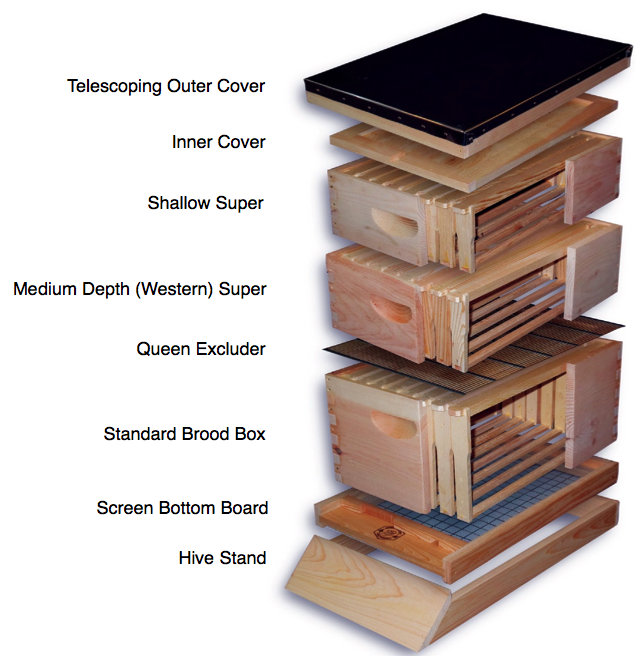 Step 10: MAINTAIN YOUR HIVE
Step 10: MAINTAIN YOUR HIVE
Regularly inspecting your hive is crucial, especially during the active months, to ensure the queen is laying eggs, the workers are building honey stores, and the colony has enough space to expand. During winter, minimize inspections to maintain hive warmth and avoid disturbing the bees. Be very careful not to harm the bees during inspections. Don’t open your beehives just to see how they are doing because this can be very stressful for the bees. Proper maintenance involves a balance of observation and minimal interference to keep the honeybees healthy and productive.
To feel confident in your beekeeping practices, continually expand your knowledge through research and hands-on experience. Understand the needs of your colonies and adapt your care as necessary. Well-maintained hives are the foundation of successful beekeeping, leading to thriving colonies and abundant honey production. By staying informed and attentive, you can ensure your hives remain healthy and productive year-round.
PROTECTING HONEY BEES
Minimize Pesticide Use: Pesticides are one of the major threats to honey bees. If you must use them, opt for bee-friendly options and apply them in the evening when bees are less active.
Plant Bee-Friendly Flora: Create a garden with a variety of flowering plants that provide nectar and pollen. Native plants are particularly beneficial as they are well-suited to the local ecosystem and attract local bee species.
Provide Water Sources: Bees need water for hydration and to regulate the temperature in their hive. Place shallow water dishes with pebbles or floating materials near your hive to ensure they have access to clean water.
Advocate for Bees: Support local and national policies aimed at protecting pollinators. Raise awareness about the importance of bees and encourage others to take steps to help protect them.
Starting beekeeping is not only a rewarding hobby but also a significant step toward protecting honey bees and contributing to ecological sustainability. By understanding the importance of bees, educating yourself, and taking the necessary steps to start and maintain a hive, you can become a successful beekeeper and help preserve these essential pollinators for future generations.
ADDITIONAL TIPS
1. Research and Education: As mentioned, start by learning as much as you can about beekeeping. Look for resources specifically aimed at “beekeeping for beginners” to build a solid foundation of knowledge.
2. Join a Community: Connect with other beekeepers through local bee clubs or online forums. Experienced beekeepers can provide valuable advice and support, helping you avoid common pitfalls.
3. Get the Right Equipment: Essential beekeeping equipment includes a bee hive, protective clothing (veil, gloves, and suit), a smoker to calm the bees, and hive tools for maintenance. Investing in good quality equipment ensures safety and efficiency.
4. Choose Your Bees: Decide on the type of bees you want to keep. Popular choices include Italian bees, known for their gentle nature and productivity, and Carniolan bees, appreciated for their hardiness and resistance to cold weather.
5. Set Up Your Hive: Select a suitable location for your hive. It should be in a sunny spot, sheltered from strong winds, and near a water source. Ensure the hive is placed on a sturdy, level surface to prevent disturbances.
6. Start with a Nucleus Colony: A nucleus colony (nuc) is a small, established colony of bees that is easier for beginners to manage. It includes a queen, workers, and brood (eggs, larvae, and pupae). Starting with a nuc can help you get accustomed to handling bees.
7. Monitor and Maintain: Regularly check your hive to monitor the health of your bees and the queen’s laying pattern. Look out for signs of diseases, pests, or other issues. Proper hive management is key to becoming a successful beekeeper.
8. Harvesting Honey: Once your bees have established themselves and produced surplus honey, you can begin harvesting. Be gentle and ensure you leave enough honey for the bees to sustain themselves through winter.
CONCLUSION
Beekeeping is a rewarding hobby and a lifestyle that requires dedication, knowledge, and hands-on experience. By following these steps, you can start your own journey to becoming a successful beekeeper, enjoying the sweet rewards of honey, and contributing positively to the environment and biodiversity. Embrace the journey, and you’ll find joy and fulfillment in every hive inspection and honey harvest. The satisfaction of nurturing honeybees and witnessing their crucial role in pollination and ecosystem health is unparalleled, making beekeeping a truly enriching and impactful pursuit.

